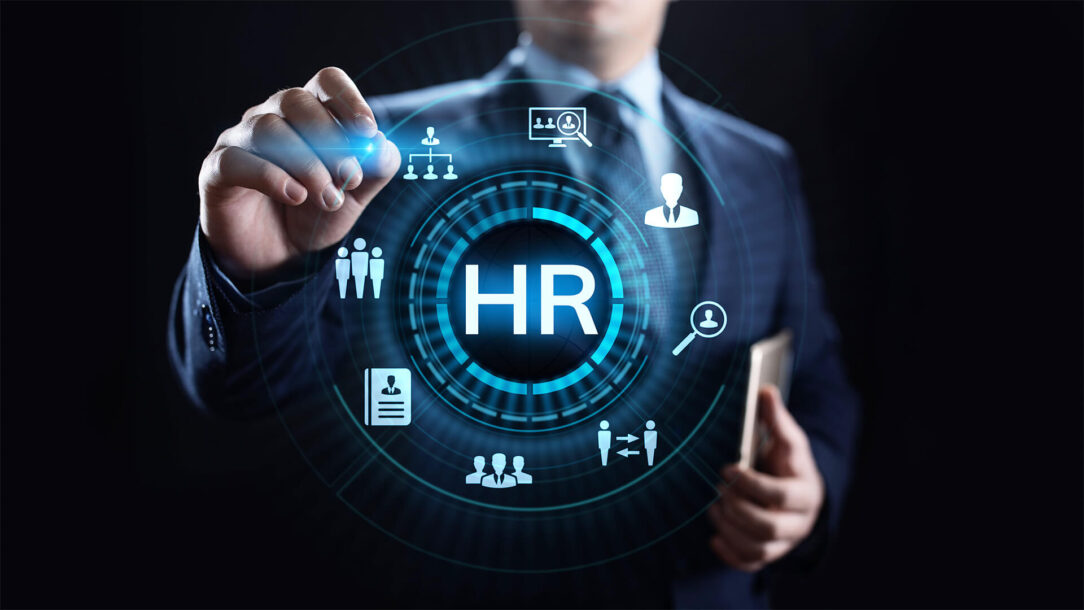Human resources are a determining factor that affects the competitiveness and efficiency of a company in its field. The most important issue in an enterprise’s human resources is effective personnel management. It is an activity aimed at achieving the most efficient use of employees to achieve company and personal goals. In addition, correct personnel management helps save the organization’s financial, time, and human resources.
World globalization and the emergence of new IT technologies are taking place at the speed of business development. Therefore, the use of digital technologies is an urgent need that optimizes the process of managing new employees. It also minimizes the subjective factor in personnel selection and increases business competitiveness, directly affecting its profitability.
The field of digital technologies in personnel management is currently at the stage of formation and development. HR-digital is an approach built on the principles of the integrity of the management model, measurability, real-time analysis, data integration, and tech flexibility in the field of human resources management. Its purpose is defined as the management of human resources based on digital technologies to increase the efficiency of HR processes.
Digital technologies allow HR managers to carry out an effective selection of workers, their adaptation with minimal expenditure of time and money, to develop effective motivational mechanisms based on the results of an objective assessment of personnel, to organize an effective process of training and professional development of employees, which contributes to the growth of satisfaction and staff loyalty. Therefore, using new HR technologies is essential for talent management, strategic decision-making, and the organization’s overall success.
Digital Technologies in Modern HR Practices: Main Areas of Application
There are several trends in the use of digital technologies in modern HR practices. Let’s consider the most important of them in more detail.
1. Use of Chatbots

Source: botnation.ai
This technology is especially relevant at the stage of personnel selection, as it allows interaction with candidates 24/7. With its help, it is possible to track the status of applicants and schedule interviews or calls with potential candidates.
In addition, chatbots are effectively used today to check applicants’ resumes. There are certain selection criteria that these papers must meet. Quite often, it is difficult for a job seeker to create a resume that would meet all the established requirements. Still, there is always an opportunity to receive review top resume services from qualified experts here. This allows the creation of a paper that deserves the employer’s attention and demonstrates the applicant’s personality from the best side.
2. Use of Social Networks
Social media is a powerful digital HR tool because it improves employers’ and recruiters’ finding of new talent. Despite the fact that it is used to implement several HR tasks (interviews, adaptation, training, etc.), its main role is manifested in the qualitative selection of candidates for vacancies. As a result, HR managers have become a popular trend to recruit potential candidates through various channels such as LinkedIn, Indeed, Monster, Facebook, etc.
3. Analysis of Big Data

Source: analyticsinsight.net
The statistics collected from the data can help businesses increase the satisfaction of clients, productivity, and revenue. In addition, experts at the Forbes Human Resources Council indicate that examining workplace data can provide valuable insights that can help HR team members improve their own work and the general performance of their organizations.
Data analysis allows the implementation of a strategic HR function. Effective analytics enable managers to make correct decisions about recruitment, performance management, and the general experience of the staff. Big data analysis is important for creating an effective HR strategy that defines business and organizational goals. It also influences plans to improve employee motivation and engagement, etc.
4. Use of Applications and Analytics Based on Artificial Intelligence
Using applications and analytics based on artificial intelligence improves personnel management processes, particularly recruiting. One example is chats based on artificial intelligence. Along with machine learning and natural language processing, artificial intelligence is also reflected in other HR solutions, including interviewing, recruiting, and employee assistance programs.
Artificial intelligence should become one of the best ways to connect HR with the entire organization and understand the needs of each department. Artificial intelligence tools are ideal for use in the HR field because they contain smart algorithms capable of collecting, analyzing, and organizing large data.
They affect the labor-intensiveness of the implementation of the personnel management function. In some cases, they can perform tasks instead of the personnel manager and accurately forecast the personnel situation’s development. Here is a list of Human Resources processes that should be based on artificial intelligence:
- Sorting resumes according to the employer’s needs;
- Automatic response to the most common questions of job seekers;
- Conducting a video interview;
- Personnel testing;
- Improving communication with staff, etc.
5. The Use of Cloud Technologies in Software for the Needs of Personnel Management

Source: bmc.com
This is one of the key Human Resources trends in the last few years. The prerequisites for the transition to cloud-based software are the ability to easily transfer HR processes to a remote digital environment, which is manifested in the following:
- These processes are standardized;
- Have paper templates;
- Defined standard flow of approvals;
- Fixed owners for each procedure or operation;
- The personnel management policy is regulated.
That is, the prerequisite for introducing cloud software should be re-engineering personnel management processes. Its implementation provides an opportunity to obtain a number of advantages, in particular, the reduction of the duration of personnel management processes and the possibility of remote work performance.
6. The Use of Machine Learning in Personnel Management
The use of machine learning is carried out for tracking and evaluating applicants, career development, etc. It involves data-driven learning and forecasting, and HR services implement these systems to identify factors such as potential candidate attrition. In addition, these tools use data to help determine candidate success, potential career paths, and the ideal size for the team and department growth.
Conclusions

Source: ceo-review.com
Therefore, in the implementation of digital technologies in the Human Resources practice, there are trends toward the use of chatbots, social networks, big data analysis, applications and analytics based on artificial intelligence, machine learning in personnel management, cloud technologies in software for the needs of personnel management, etc. Digital solutions developers provide the technical component of digital HR, while company management and HR departments must build their own integrated strategies and digital HR management programs.
The transition to digital transformation should be based on a deep analysis of external and internal factors, a study of the pros and cons of existing IT technologies, as well as industry limitations.




